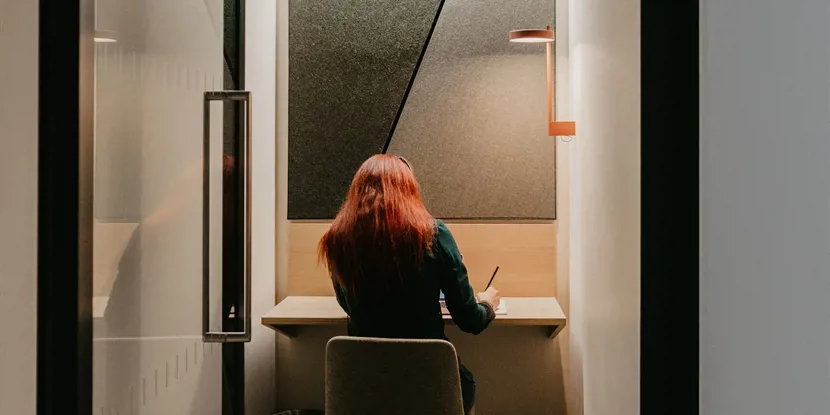The Future of Workplace Acoustics: From Noise Pollution to Personalized Soundscapes

As we continue to redefine the post-pandemic working environment, the question of noise in the workplace is capturing attention. Gone are the days when office design was only about the visual aesthetics; today, the focus is shifting towards an immersive 'experience'. This includes taking into account the ambient noise or 'soundscape', and its impact on productivity, stress, and overall employee well-being.
The pandemic-induced lockdown heightened the collective workforce's sensitivity to sound. We oscillated between eerie quietness and cacophonous chaos, which, coupled with an increase in virtual meetings, transformed our perception of noise.
In light of this, experts are discussing the potential of 'personalised bio-soundscapes'. Experience designers imagines a future where technology, such as AI and biosensors, generates a personalized soundtrack based on an individual's mood. However, until such advancements are ubiquitous, the task of noise management lies primarily with office design.
The modern workplace aims to offer a varied and flexible environment, acknowledging that what is motivating for one person might be disturbing for another. A move towards 'zoning' has been embraced, with office spaces designed to cater to a wide range of needs at any given moment. Whether it's a quiet corner for deep focus, a bustling open area for those who thrive on background noise, or private offices for confidential calls, offering choices plays a significant role in contemporary office design.
At the forefront of innovative office design is Meta, whose novel solution to post-lockdown noise complaints included a moveable, sound-absorbing screen dubbed 'The Cube'. Made from recycled PET plastic, The Cube allows workers to construct their makeshift cubicles, only to dismantle them when the task is done.
The hybrid model of work has made the option of choice even more critical. It offers employees the freedom to decide where and when they work, befitting their varying needs. After all, a conducive working environment is never one-size-fits-all.
However, the task of curating the perfect atmosphere — a delicate balancing act of muting conversations, introducing soundscapes, and dampening voices — is complex. Noise preference varies significantly among individuals. Some workers relish in the low hum of a bustling café or television noise, around 70 decibels, which studies suggest stimulates creativity. Conversely, others may prefer quieter surroundings, with sound levels below 50 decibels, as suggested by a recent study from the University of Arizona Institute on Place, Wellbeing & Performance.
This dichotomy illuminates the importance of physiological well-being in a work environment. Excessive noise levels, even if below 50 decibels, can trigger a stress response and hamper productivity. Conversely, a consistent background noise can effectively mask distracting sounds, thus improving focus and productivity. The key is to create an environment that optimizes these noise levels to enhance the employees' physiological well-being.
To achieve this, office designers need to incorporate the findings from acoustical engineers into their blueprints. Simple interventions can be implemented to mitigate sound distraction in offices, thus maximizing employee well-being and productivity.
The evolution of workplace noise is an exciting prospect. As we advance further into the hybrid working model, the necessity to adapt and tailor our workspaces to meet our varying noise preferences becomes ever more evident. The challenge now lies in striking the right balance between noise and silence, fostering an environment conducive to productivity, creativity, and most importantly, employee well-being. The future of noise in the workplace is no longer just about noise cancellation or reduction, but noise personalization and optimization.
- Europe's Commercial Real Estate: A Beacon for Investors 6. November 2024
- Sustainable and cost-effective upgrades for your workshop 21. March 2024
- 10 tips and tricks on what to look out for when you plan to rent a warehouse 15. March 2024
- Green buildings: The future of profitable and sustainable commercial real estate 23. February 2024
- The latest trends in office interior design 9. February 2024
- The Future of Workplace Acoustics: From Noise Pollution to Personalized Soundscapes 22. June 2023






